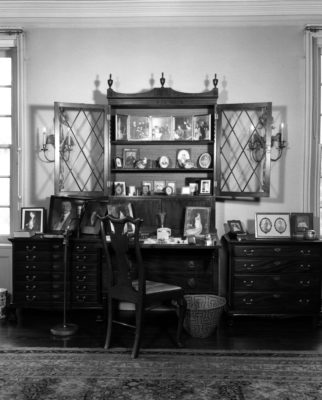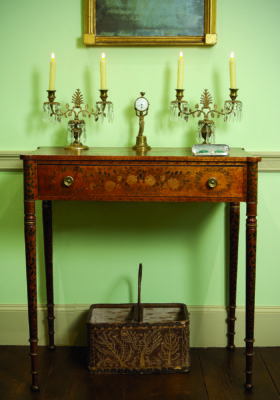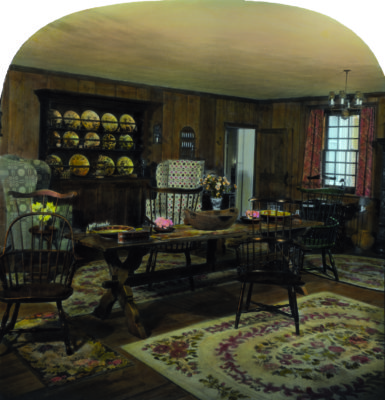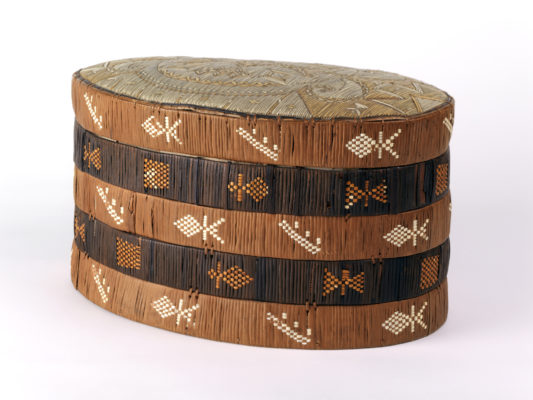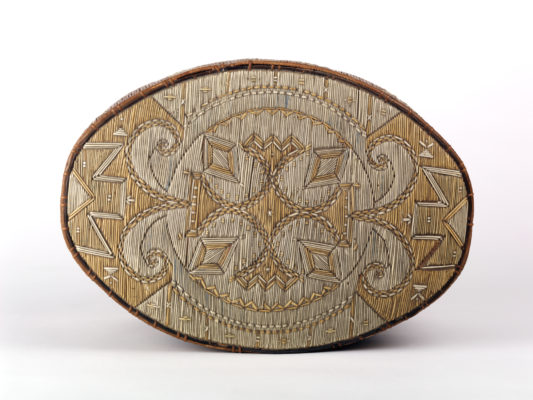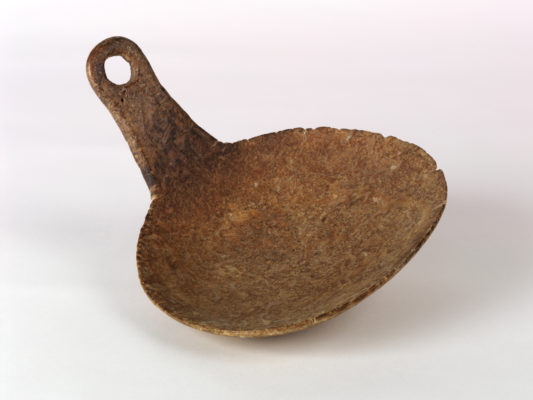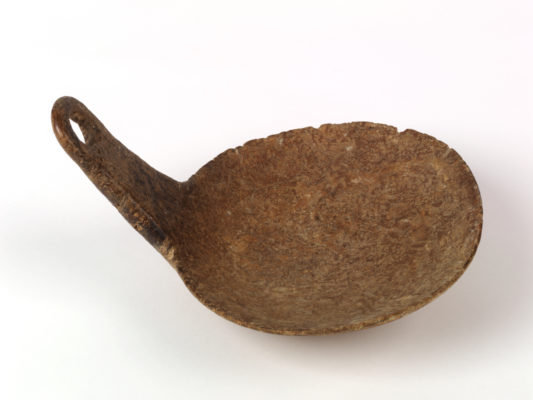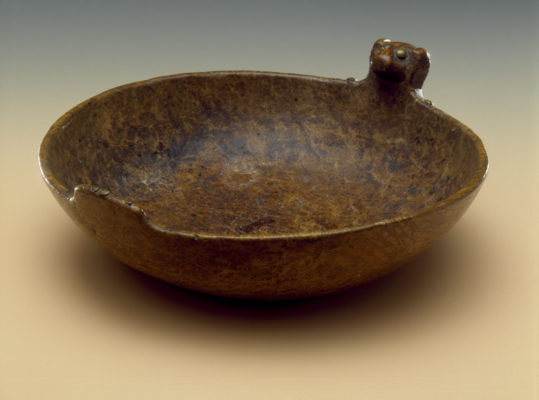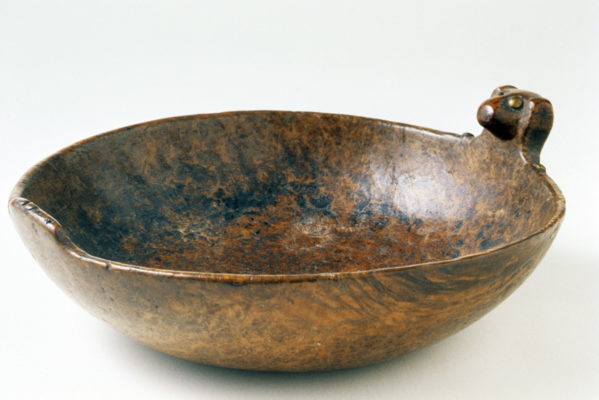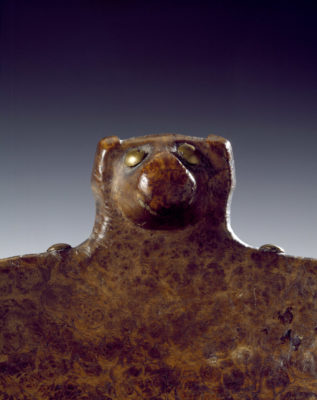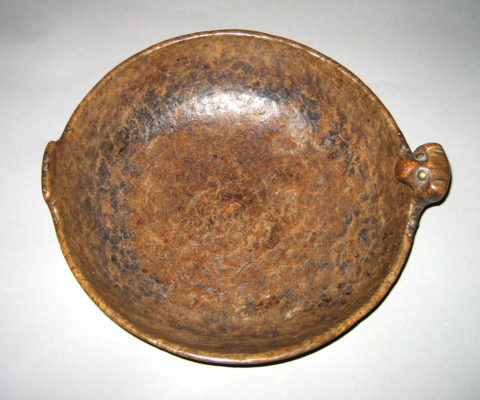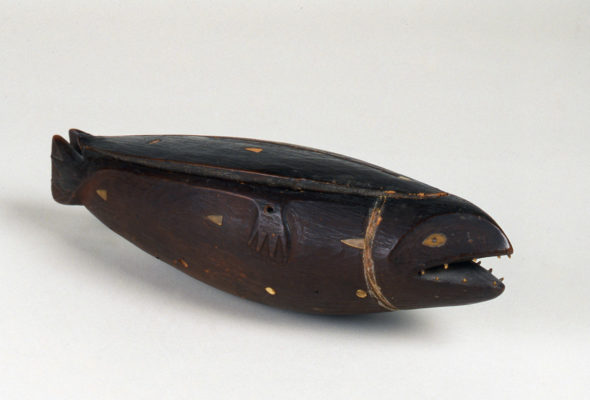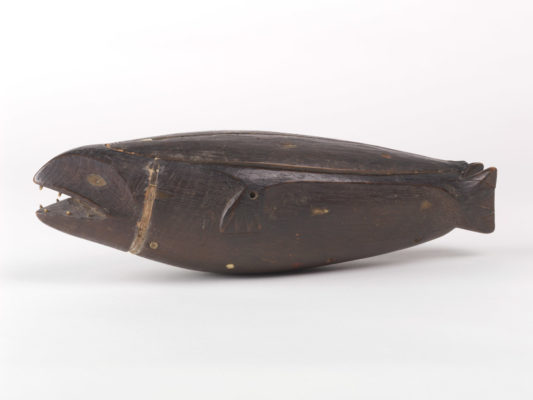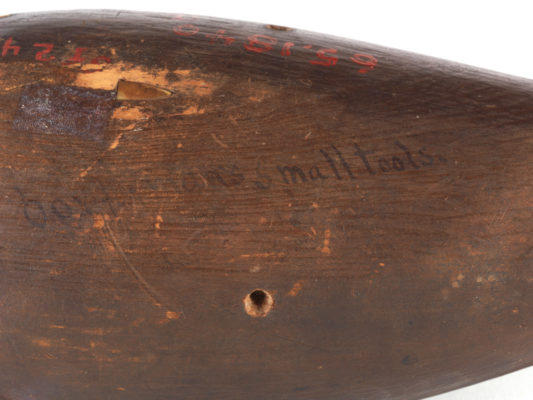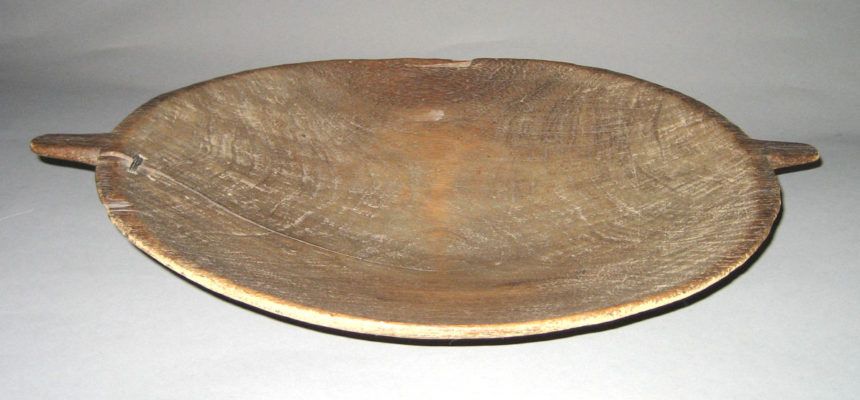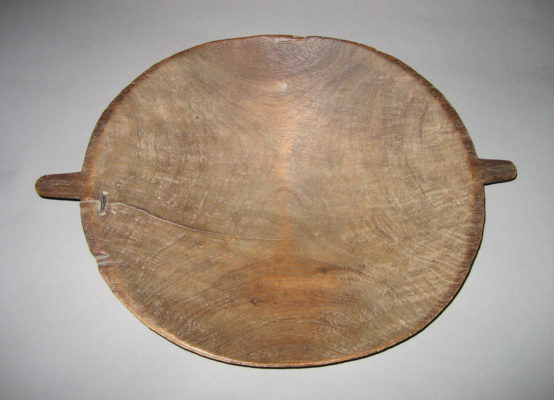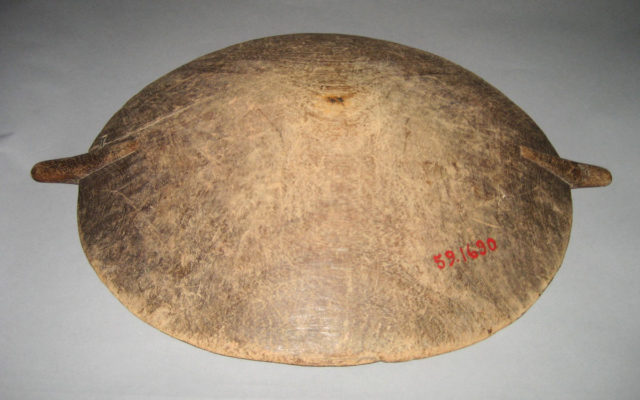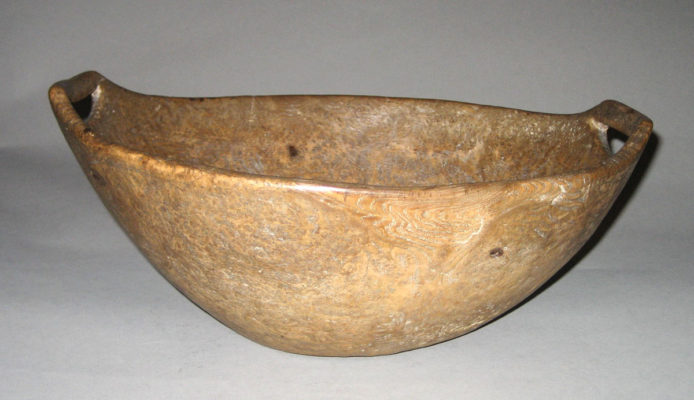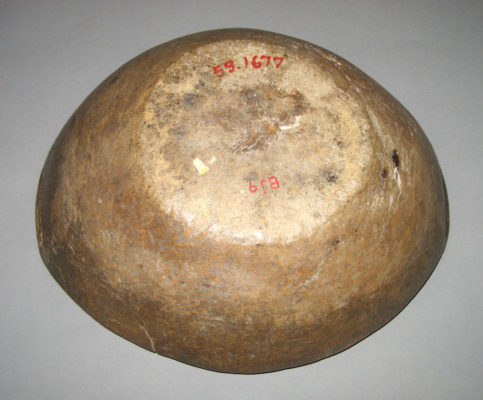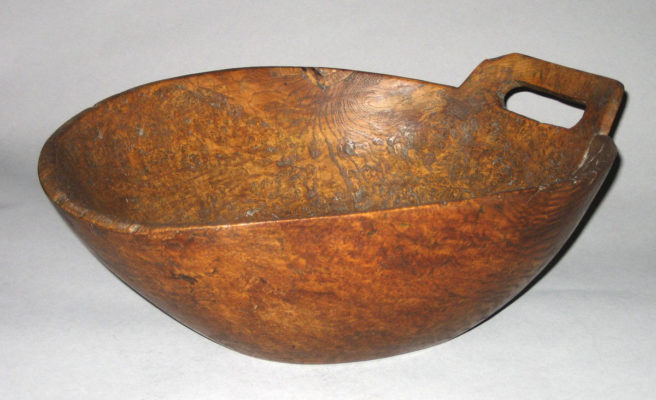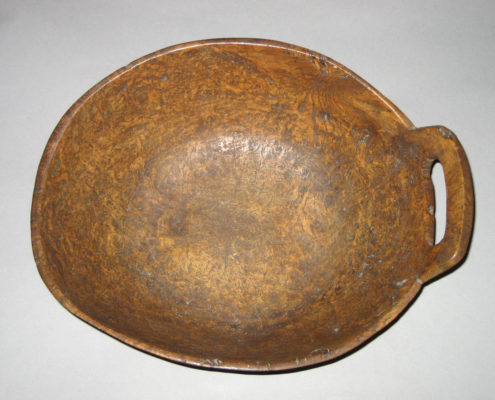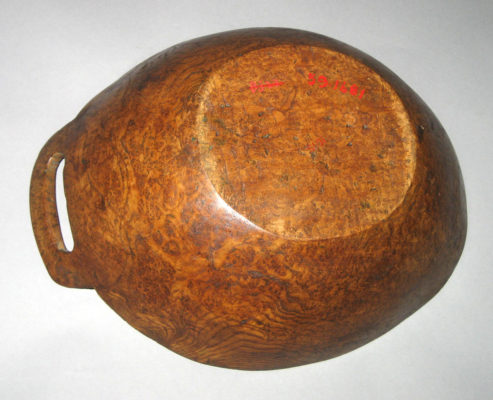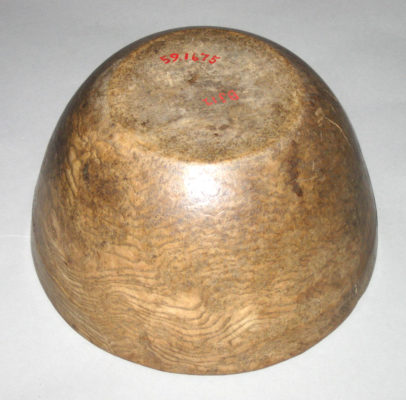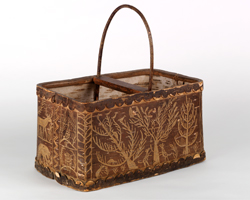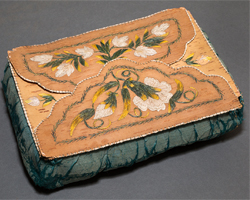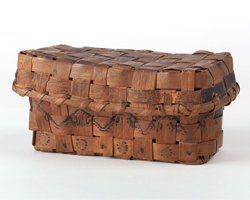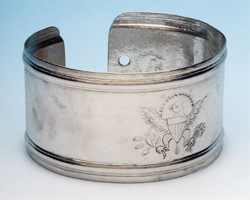Henry Francis du Pont, Folk Art, and the “Exotic”
Although the craze for “Indian things” in the early 1900s centered mainly on objects from the Southwest, some dealers purchased East Coast Native objects. H. F. du Pont acquired and used such items at Winterthur and at Chestertown, his summer home on Long Island.
The Myth of America’s “Disappearing Indians”
By the late 1800s, many Americans incorrectly believed that Native American groups were dying out. Although this was far from true, disease, government oppression, and mistreatment caused enormous physical, cultural, and psychological loss among Native peoples. In an attempt to collect evidence of the supposed “disappearing Indian,” museum professionals, ethnographers, and private collectors bought and stored as many Native-made pieces as they could. In the process, some pieces lost their cultural context, making it easier to see them purely as decorative objects.

Objects
Henry Francis du Pont received this box, one of two, as a Christmas present in 1942 from antiques dealer Joe Kindig. Du Pont penned a thoughtful acknowledgment of Kindig’s gift, stating that he had “nothing like them” in his collection. He was right. This box is made from rings of birchbark wrapped with dyed spruce root strips. Similar patterns were popular on items made for sale to tourists in the mid- to late 1800s. Once far brighter, the lid has faded to soft browns.
Box
Unknown Mi’kmaq artist
Nova Scotia, Canada; late 1800s
Birchbark, dyed spruce root, dyed porcupine quills
1958.1134a,b Bequest of Henry Francis du Pont
Quill embroidery: how did they make it?
After scratching a design on a piece of birchbark, Native artists often added dyed porcupine quills by pressing them through the bark like staples. To do this, they first had to flatten each quill with a special tool, then press the ends through holes punched in the bark at regular intervals.

When Haudenosaunee, or Iroquois, peoples gathered, they usually ate meals from a communal pot filled with corn mush. The owner of the pot would have used this rounded spoon to ladle generous servings into each person’s bark or wooden bowl. The hole in the top of the handle made it easy to tie the spoon to a belt or bandolier. As they did with other objects, Native artists frequently gave, traded, and sold spoons to non-Natives.
Spoon
Unknown Native American artist
Eastern Woodlands; 1800–1860
Wood
1960.963 Bequest of Henry Francis du Pont

Personal and Political
In his search for the perfect decorative accent, H. F. du Pont sometimes purchased items that were not intended for non-Native owners. Some of these objects like the two below are now in Winterthur's collection.
Bowls with decorative rim carving can usually be attributed to Native American artists. Hewn from a single piece of wood, this bowl features a carefully rendered animal head. The eyes and shoulders are highlighted with brass nails. The animal may be a bear or dog and could represent a clan’s animal ancestors or possibly an animal associated with a particular ritual. This is one of the few pieces that H. F. du Pont purchased knowing it was made by a Native artist.
Bowl
Unknown Native American artist
Great Lakes region; 1800–1860
Elm, brass
1959.1694 Bequest of Henry Francis du Pont
A Yup’ik Eskimo artist living on the southern coast of Alaska hewed this seal-shape box from a single piece of wood. Such boxes, called “yaassiik” by the Yup’ik, held harpoon points, parts of masks, paints, or small tools. The Yup'ik, like most northern Native peoples, hunt seals for meat and fur. The paws of this seal are carved in a particular way that helps specialists identify the box as a Yup’ik piece. The hole piercing the paw may have held a blue bead, symbolizing the sky world.
Yaassiik
Unknown Yup’ik Eskimo artist
Southern Alaska; 1850–1900
Wood, bone, or ivory
Inscribed “Box for Men’s Small Tools”
1965.1840a,b Bequest of Henry Francis du Pont

Is It or Isn’t It?
How can you tell if a bowl has been made by Native Americans? A bowl that is hewn from a large burl, with stepped carving on the rim or pierced handles and a deep profile, would match the few known examples of Native-made bowls.
This flat, platter-like bowl is cut from a thick plank of wood rather than hewn from a burl. The shallow profile, materials, and thin tab handles indicate that it is probably African or Asian rather than Native American. H. F. du Pont, like many of his contemporaries, collected small quantities of African objects. Twentieth-century collectors often displayed African and Asian art with modern paintings and sculpture to heighten contrast and aesthetic appeal.
Platter
Possibly Africa or Asia
Wood
1959.1690 Bequest of Henry Francis du Pont
It is subtle touches that mark this bowl as probably Native American. The flat base, flaring sides pierced by half-oval handles, and hewn construction all point to a Native maker. A few mentions in account books, letters, and other period sources indicate Native men carved bowls such as these to sell to non-Native colonists. Cut marks on the interior indicate these bowls were generally used to chop food for cooking.
Bowl
Unknown Native American artist
Mid-Atlantic region; 1700s or 1800s
Wood
1959.1677 Bequest of Henry Francis du Pont
This burl ash bowl once had two rectangular, pierced handles, one of which has since broken. A later owner filed the broken edge and turned the bowl into a measuring scoop. The pierced handles, oval hewn body, and flat bottom are indicators of possible Native American origin.
Bowl
Possibly Native American artist
Eastern North America; 1800s
Wood
1959.1681 Bequest of Henry Francis du Pont
The slightly flaring rim and incised outer lip on this bowl point toward a European maker who placed the burl on a chuck for turning. Europeans usually made their wooden wares by turning them on a lathe, which spun the block of wood while a carver applied a chisel to the surface. That process left characteristic grooves and produced distinctive shapes, often quite different from those a Native American carver would have created with his hand tools.
Bowl
Unknown artist
North America; about 1825
Wood
1959.1675 Bequest of Henry Francis du Pont


